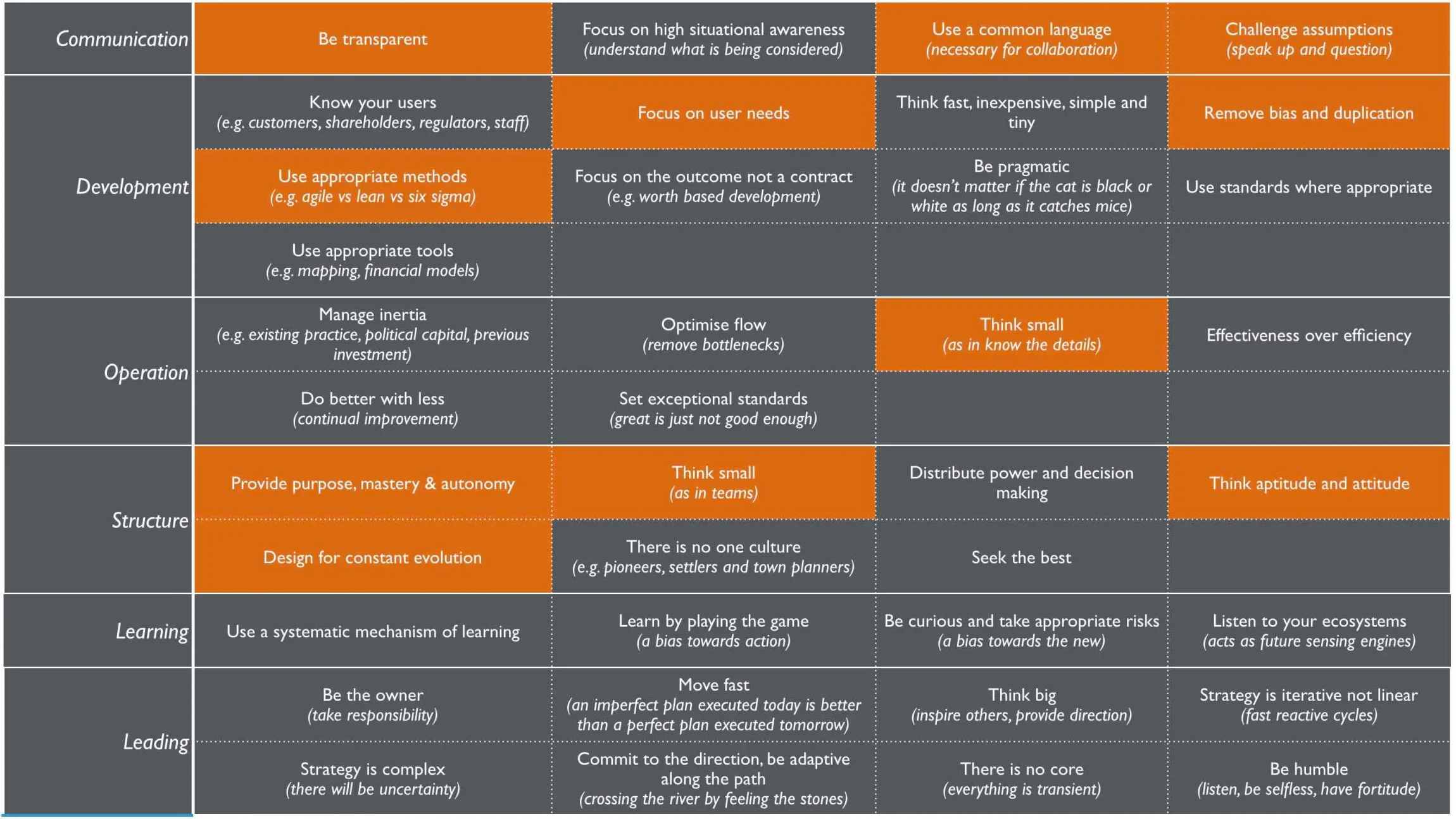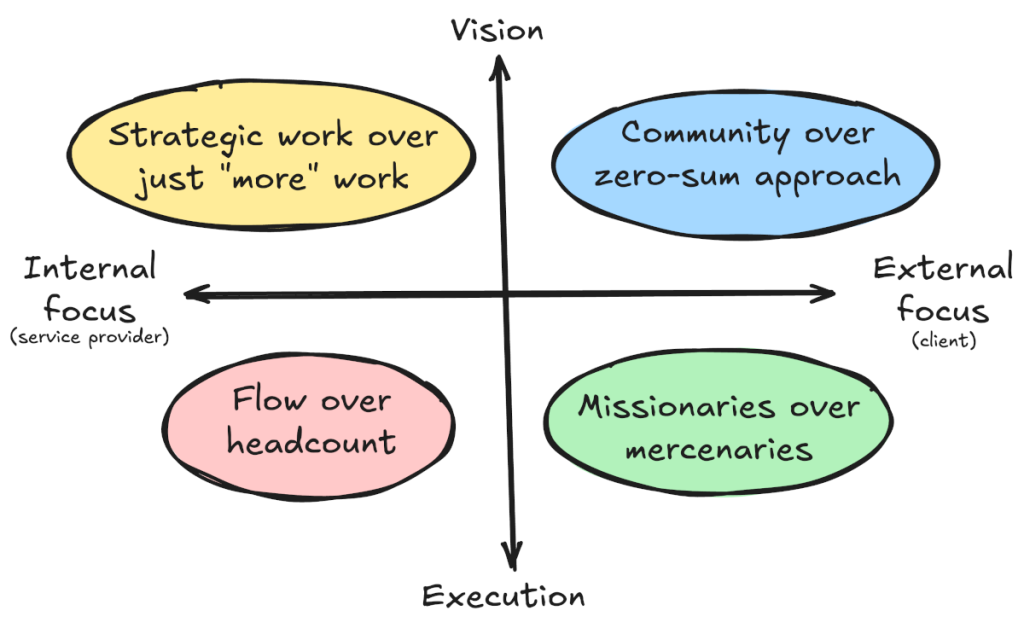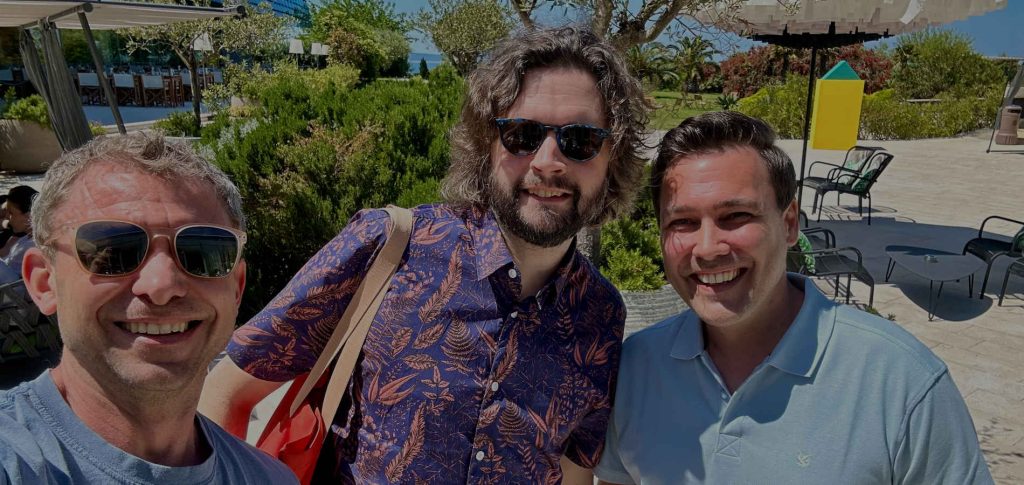Invented by Simon Wardley, it is one of those techniques that has many layers and nuances, with each layer bringing exponentially more value. Instead of relying on narratives, partial data, anecdotal trends and gut feeling to make sound predictions and decisions, Wardley Mapping enhances situational awareness in decision-making. Mapping includes several aspects, each inviting progressively deeper conversations that enhance situational awareness.

Most people are familiar with mapping the landscape, thus understanding their value chain. For some, even this step is eye-opening. So much so that they stop here and never go deeper in conversations. While there definitely is value in mapping your landscape, you would get much more value by going a step further in your thinking and considering other factors such as climatic patterns and doctrines. Unfortunately, far fewer people take these further steps, which is a shame, because those conversations are where the real gold is.
To be honest, I took a shot at Wardley Mapping years ago but got stuck on this same first hurdle that I described. However, after writing BizTech Evolution, many things clicked for me, and now I see Wardley Mapping in a whole new light. It turns out that, as with many things in life, you need to be ready to embrace a different way of thinking. Forcing it down someone’s throat doesn’t do any good. And now, looking in hindsight, I can see some commonalities between my ideas in BizTech Evolution and Simon’s thoughts while introducing Wardley Mapping.
I won’t turn this into a Wardley Mapping textbook. I wouldn’t be able to do that even if I tried. For that, turn to Simon’s book and blog series. I will, however, introduce a couple of key terms.
Landscape
When making decisions, maps beat narratives. Therefore, start with mapping your landscape: the value chain that consists of components that ultimately bring value to the client. A map has two axes: the horizontal one describes dependencies between components and their visibility to the client (value chain), while the vertical one describes a component’s degree of evolution: from novel and uncharted to industrialized and considered a commodity.

Fast-drawn map for a web-shop scenario
Climatic patterns
These are the rules of the game. It’s what your organization will encounter if you enter this business. Climatic patterns can’t be changed, they are not under your control, and they equally apply to everyone. Think of gravity in the physical world. Think of playing football on a tilted field – the ball will equally slide for everyone.
Doctrines
These are principles and practices that are under your control and your organization can choose to apply them to leverage some opportunity. Think of them as proven patterns for achieving the goal. In football, a doctrine would be playing 4-4-2 or 5-3-2.

Doctrines (source: blog post Doctrines @ medium)
In his blog series, Simon has a chapter dedicated to doctrines where he lists and systematically categorizes them. As I advanced through the book and learned about various doctrines, I started to recognize principles and practices that form the cornerstone of BizTech Evolution. I won’t lie, it felt like good validation of my work finding commonalities with Simon’s work. However, people are strange species susceptible to biases, so I’ll leave it to you to be the final judge of our alignment.
>> Get BizTech Evolution book here <<
Just a short recap: in my book BizTech Evolution, I describe how clients and their service providers can adjust their behavior to generate more value from their collaboration. And I refer to the client-provider relationship in the broadest sense, covering collaboration between enterprises and consultancies, as well as between two departments in a large enterprise. The principles are the same. The same service dynamics happen in all cases.
In BizTech Evolution, I introduce four guiding principles, and it was interesting for me to see how they relate to doctrines that Simon grouped into several categories: communication, development, operation, structure, learning, and leading.

Four guiding principles from BizTech Evolution
It turned out that doctrines can be pretty decently mapped to the four guiding principles. Let me share some examples.
Guiding principle #1 – Missionaries over Mercenaries
(aka build value-driven partnerships that prioritize client outcomes)
Related Wardley Mapping doctrines:
- Know your users
- Focus on user needs
- Focus on the outcome, not a contract
Simon is very clear that every mapping needs to be anchored by a user and their needs. “Critical to mapping is the anchor and hence you must first focus on the user need.”.
Guiding principle #2 – Strategic work over just “more” work
(aka focus on initiatives that drive meaningful business impact)
Related Wardley Mapping doctrines:
- Focus on high situational awareness
- Strategy is complex
- Strategy is not linear
Wardley Mapping was born out of Simon’s quest to better understand how to think about, develop and articulate strategy. Prioritizing strategic work is what Wardley Mapping excels at.
Guiding principle #3 – Flow over headcount
(aka optimize value delivery instead of simply adding resources)
Related Wardley Mapping doctrines:
- Optimise flow
- Effectiveness over efficiency
- Think fast, inexpensive, simple and tiny
In every system there is inherent flow of capital, revenue, risk, knowledge, etc. in short value. “Often when you examine flows then you’ll find bottlenecks, inefficiencies and profitless flows. There will be things that you’re doing that you just don’t need to.”
Guiding principle #4 – Community over zero-sum approach
(aka create sustainable ecosystems where all participants thrive)
Related Wardley Mapping doctrine:
- Listen to your ecosystem
Simon found that “the next generation companies use ecosystems to more effectively manage, identify and exploit change.”
There are of course many more doctrines, and I’m yet to learn about them. But finding that doctrines are “mappable” to my four guiding principles was a revelation and a confirmation that my outsourcing model described with four guiding principles is sound.
I’m not even remotely done with (re)learning about Wardley Mapping, but this is a great start. I’ll get back with more.
-Ivan
Sharing is caring
If you find 0800-DEVOPS useful, share it with your friends, check out the archive and subscribe to receive it in your mailbox.



